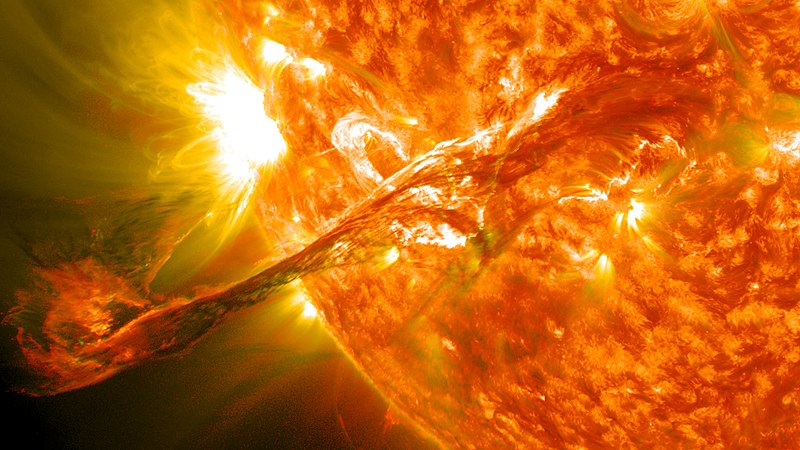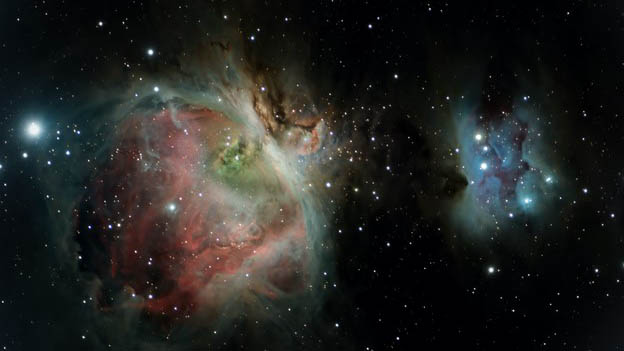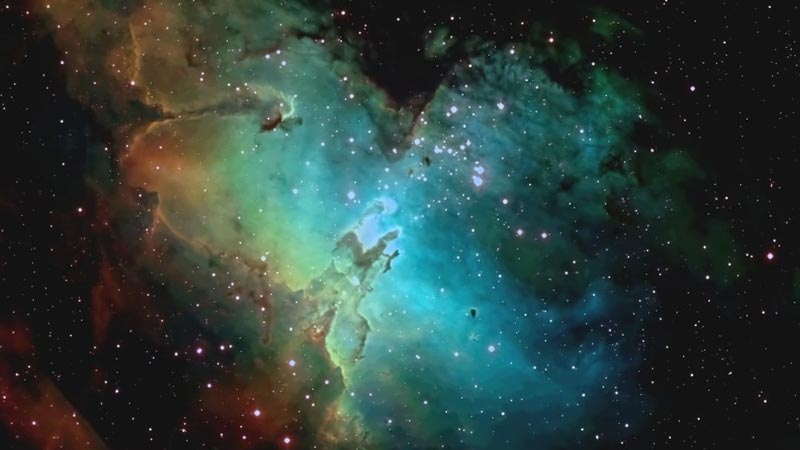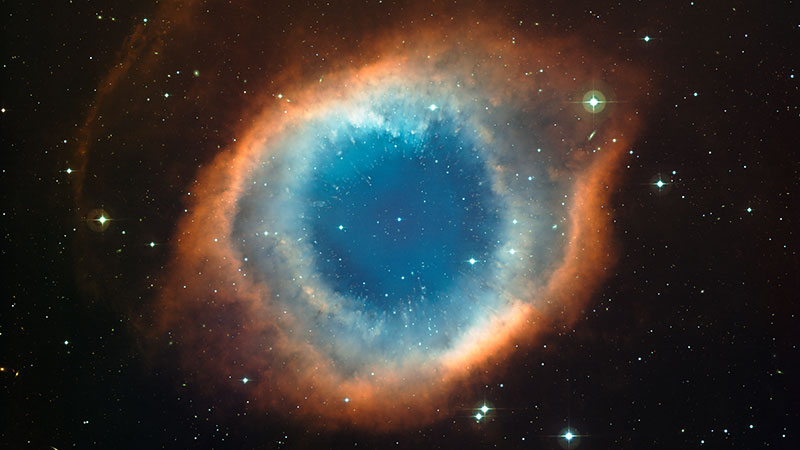Table of Contents

NASA Solar System Ambassador,
Astronomical League Master of Outreach,
Cruise ship speaker on Astronomy & space science,
Amateur astronomer and photographer for 50 years
The word nebula comes to us from the Latin which means cloud. Before we knew better, the term was broadly applied to any diffuse object, including galaxies. Today, because of our understanding of the nature of galaxies, nebula refers specifically to clouds of interstellar dust or ionized gas.
How Bright and Big are Nebulas?
Almost all nebula are invisible to the naked eye. The two exceptions are the Orion nebula and the Eta Carina nebula (the latter only visible in the southern hemisphere).
When we talk about size of nebula we need to consider whether we are discussing the absolute size or its apparent size from our point of view on Earth. In terms of absolute size, many nebula are enormous, with some spanning over 1000 light years. In terms of apparent size, they can range from about the size of Mars to an area that would take over 10 full Moons to cover up.

Types of Nebulas
There are 5 distinct classes of nebulas: Emission, Reflection, Dark, Planetary, and Supernova Remnants.
Emission Nebula
Emission nebula are clouds of high temperature ionized gas. Atoms are excited by high energy light from a nearby star and emit photons as they fall back to lower energy states. Most emission nebula are red because Hydrogen is the most common gas. They emit light at the hydrogen alpha wavelength. These types of nebula are often the brightest of all nebulas and can be active star formation regions.
In these cases massive gas clouds collapse under their own weight, and then due to the conservation of angular momentum, begin to spin, flatten, and contract. Over a few million years, the temperature at the core with rise until it’s sufficient for nuclear fusion to occur and a star is born.
Good examples of emission nebula include the Orion nebula (M42), the Rosette nebula (Caldwell 49), and the Lagoon nebula (M8).

Reflection Nebula
These nebulae give reflected light from nearby broadband emitters light stars as the light is reflected off interstellar dust particles. They are usually blue for the same reason our sky is blue, scattering of broadband light is more efficient at blue wavelengths.
Examples of reflection nebula include the Iris nebula (NGC 7023), the Pleiades (M45) and the Witch Head nebula (IC2118).

Dark Nebula
Dark nebula are actually very similar to reflection nebula. The difference is where our line of sight is with respect to the dust and the energy source. If the dust is between us and the energy source it simply absorbs and blocks the light and it’s a dark nebula. If our line of sight is on an angle to the dust and energy source then some of the light is reflected our way and it’s a reflection nebula.
Examples of dark nebula include the Snake Nebula (Barnard 72) and the Horsehead nebula (Barnard 33).

Planetary Nebula
This unfortunate name has nothing to do with planets. Every astronomers with primitive equipment noticed deep space objects that with often small, bright, and round which looked like planets. This is how they got their name. In reality they are shells of gas blown off by intermediate sized-stars (like our Sun) late in life. Planetary nebula are usually circular in shape and brighter ones often feature red and green colors.
Good examples of planetary nebula include the Ring nebula (M57), the Dumbbell nebula (M27) and the Owl nebula (M97).

Supernova Remnants (SNR)
When a star more than 8X the mass of our Sun runs out of nuclear fuel it blows up in a Supernova explosion. For a few days a supernova can outshine an entire galaxy. The mass of the exploded star is flung out into space in all directions and this gas is what we see as a supernova remnant. SNRs often appear to have delicate filaments. They are typically colorful, rich in many elements and emitting light in multiple wavelengths. Famous SNR’s include the Crab Nebula (M1) and the Veil Nebula (NGC 6960 and NGC 6992).

Diffuse nebula
The term diffuse is not a class of nebula. It is given to any nebula that has no well-defined boundaries. They often combine emission, reflection and dark nebula properties.
Many nebula in the sky are actually combinations of multiple nebula types.
Take for example M20, the Trifid Nebula. It is a combination of a reflection nebula (blue), an emission nebula (red) and dark nebula (black ‘gaps’ in the emission nebula).

Colors of Nebulae
All photos taken for this article except Eta Carinae were natural broadband, so that the colors are representative of what the eye would see. Many spectacular nebula photos are taken in narrowband and assigned colors in post-processing. For example the Hubble Palette assigns green to ionized hydrogen, blue to ionized oxygen, and red to ionized sulfur. There are examples of the same nebula photographed in broadband and narrowband wavelengths.


Quiz
Time for a quiz! Take a look at the following 5 photos and see if you can figure out which nebula type(s) each represents. Answers below!





Answers
Photo #1 is Barnard 72, a dark nebula in Ophiuchus. The dark obscuring areas should have been a giveaway.
Photo #2 is the Cat’s Paw nebula (NGC 6334), an emission nebula in Scorpius. The bright red color suggests ionized hydrogen emissions.
Photo #3 is the Helix nebula (NGC 7293), a planetary nebula in Aquarius. The circular shape is and colors are the hints here.
Photo #4 is the Crab nebula (M1), a supernova remnant in Taurus. The colors and filamentary nature of its shape suggests an SNR.
Photo #5 is the Iris nebula (NGC7023) in Cephus. The blue color is the key identifying feature of this nebula.
How many did you get right? I hope you found this discussion interesting and informative. The next time you see a nebula photo see if you can guess its type before you read about it!





